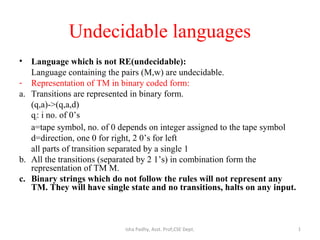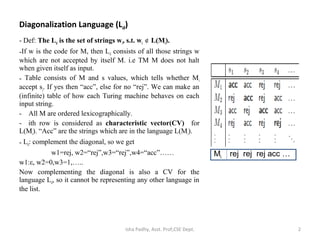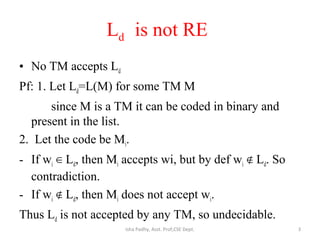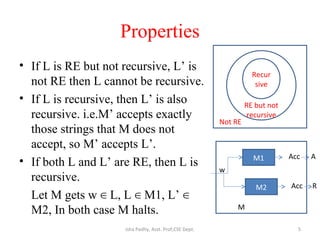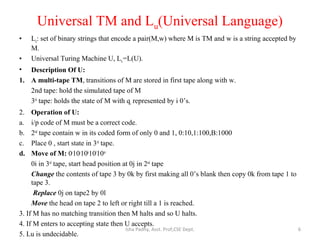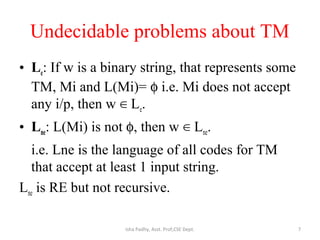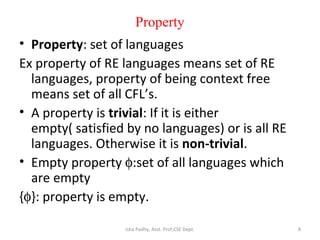The document discusses several key concepts in computability theory:
1. The diagonalization language Ld is undecidable as it contains strings that would cause any Turing machine encoding to not halt on itself as input.
2. The universal Turing machine U can simulate any other Turing machine and is used to show the universal language Lu is undecidable.
3. Rice's theorem states that any non-trivial property of recursively enumerable languages is undecidable, such as whether a language is empty or not empty.
